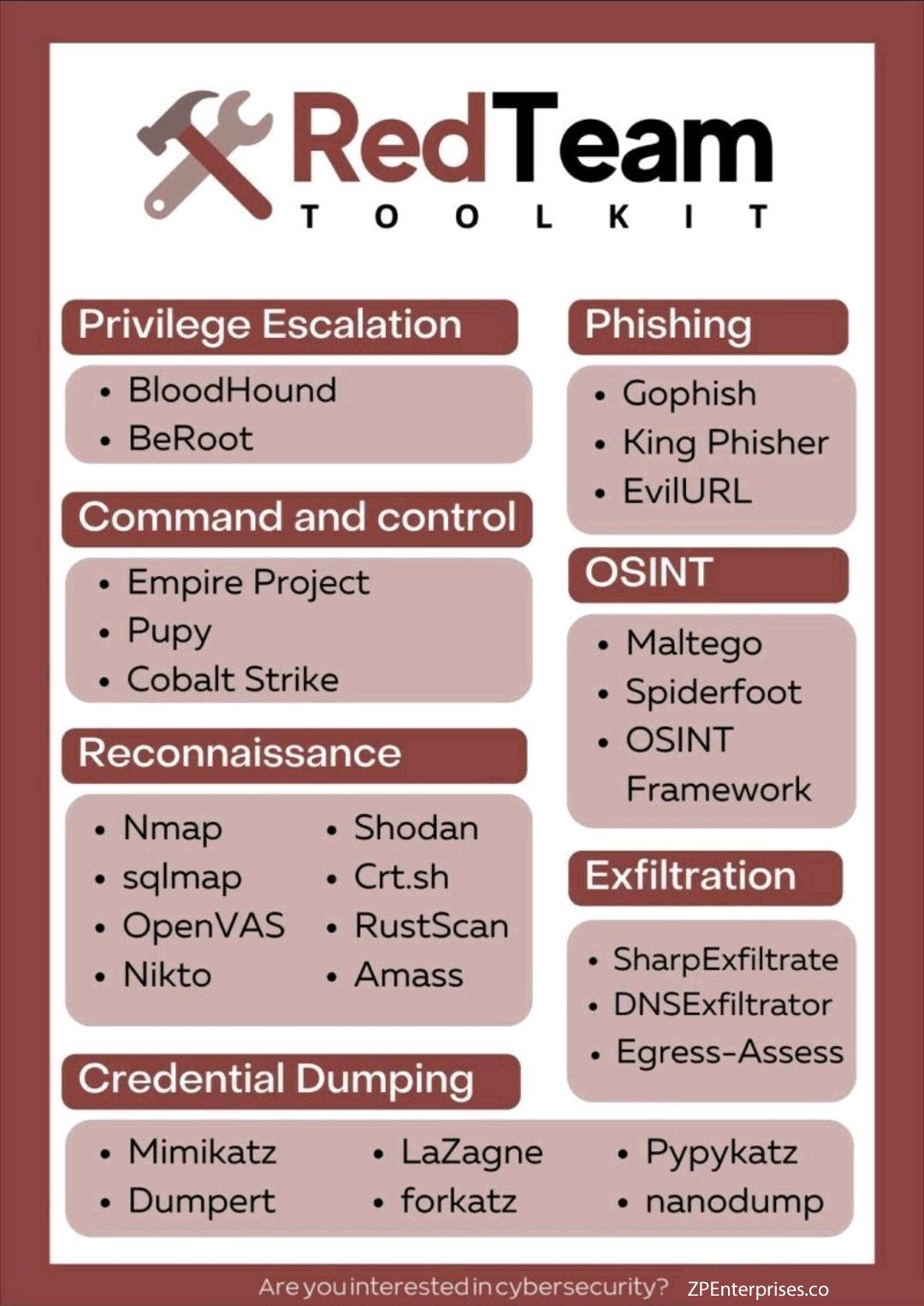Red teaming, the ethical hacking practice that simulates real-world cyberattacks, plays a crucial role in fortifying an organization's cybersecurity defenses. By employing the tools and techniques favored by malicious actors, red teams expose vulnerabilities and weaknesses that traditional security measures might miss. To achieve this, red team professionals rely on a versatile arsenal of software applications, each designed to exploit specific security gaps.
At the foundation of the red team toolkit lies reconnaissance. Tools like Maltego and Recon-ng enable the gathering of intelligence about a target network. By scouring public data sources and identifying connected devices, red teams can map out the network's architecture and pinpoint potential entry points. Once a foothold is established, vulnerability scanners like Nessus or OpenVAS come into play. These applications scan systems for known weaknesses, providing red teams with a prioritized list of targets.
Having identified vulnerabilities, red teams then turn to exploitation tools. The Metasploit Framework stands as a popular option, offering a vast library of pre-written exploits designed to compromise vulnerable systems. Red teams can customize these exploits or craft their own using tools like Metasploit Scripting Framework, further enhancing their attack capabilities.
Gaining initial access is just the first step. To maintain control and elevate privileges within the network, red teams leverage tools like PowerSploit and Mimikatz. PowerSploit, for instance, provides a collection of scripts that exploit vulnerabilities in Microsoft products, while Mimikatz can be used to steal credentials stored in a system's memory.
Social engineering, a tactic frequently employed by cybercriminals, also finds its place in the red team arsenal. Tools like King Phisher allow red teams to simulate phishing attacks, gauging employee susceptibility to these deceptive tactics. By identifying employees who fall victim to phishing attempts, organizations can tailor security awareness training programs to address these knowledge gaps.
The red team toolbox extends beyond software. Physical security assessments often involve bypassing physical access controls. Tools like lockpicking kits and RFID scanners can be used to test the effectiveness of these measures, exposing weaknesses that could be exploited by real-world attackers.
The efficacy of red teaming hinges on its ability to mimic the ever-evolving tactics of cybercriminals. As new vulnerabilities are discovered and exploited, the red team toolset must adapt accordingly. By staying abreast of the latest hacking trends and incorporating innovative tools into their testing procedures, red team professionals ensure that an organization's defenses remain robust in the face of a constantly shifting threat landscape.
